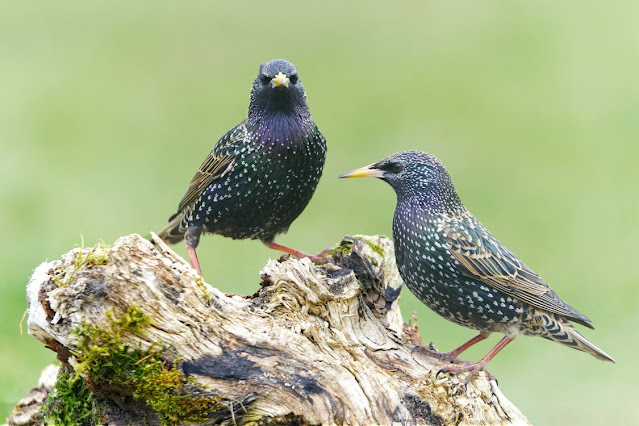The lifespan of starlings, like many bird species, can vary depending on factors such as their environment, predation, and availability of food and resources. In the wild, the average lifespan of a starling is generally around 2 to 3 years. However, some individuals may live longer, possibly up to 5 to 6 years or more under ideal conditions.
In captivity, starlings can have a slightly longer lifespan since they are protected from many of the risks and dangers that wild birds face. With proper care and attention, captive starlings can live up to 10 years or more.
It's important to note that these are general estimates, and individual starlings' lifespans can still vary widely based on various factors. Overall, starlings are relatively short-lived birds compared to some other species, and their populations can be affected by changes in their habitat and other environmental factors.
Here are some additional interesting facts about starlings:
Native Range: The common starling (Sturnus vulgaris) is native to Europe, Asia, and North Africa. It has been widely introduced to other parts of the world, including North America, Australia, and New Zealand.
Introduction to North America: The introduction of European starlings to North America is a well-known example of human-mediated bird introduction. In the late 1800s and early 1900s, approximately 100 starlings were released in Central Park, New York City, by a group that wanted to introduce all birds mentioned in the works of William Shakespeare to North America. Since then, starlings have spread across the continent and are now one of the most common and widespread bird species in the United States and Canada.
Murmurations: Starlings are famous for their incredible aerial displays known as murmurations. These murmurations occur when large flocks of starlings fly in synchronized patterns, creating mesmerizing shapes and formations in the sky. The synchronized movements help protect the birds from predators, improve foraging efficiency, and are believed to play a role in social bonding.
Omnivorous Diet: Starlings are omnivorous birds, meaning they eat a wide variety of foods. Their diet includes insects, fruits, seeds, grains, and human food scraps. This adaptability contributes to their success in urban and agricultural environments.
Imitative Abilities: Starlings are accomplished mimics and can imitate a wide range of sounds they encounter in their environment. They can copy the calls of other birds, human-made noises, and even mechanical sounds.
Nesting Habits: Starlings are cavity-nesting birds, meaning they build their nests in hollows and crevices of trees, buildings, and other structures. They can be quite resourceful and may use their strong beaks to enlarge or modify existing nest sites.
Nest Competitors: Due to their aggressive and competitive nature, starlings can outcompete native bird species for nesting sites and food resources. This has led to concerns about their impact on local ecosystems and native bird populations in some areas where they have been introduced.
Seasonal Migrations: In their native range, some starling populations are migratory, while others are resident year-round. In regions with harsh winters, some starlings migrate south to more temperate areas during the colder months.
Starlings are intriguing and adaptable birds, and their ability to thrive in diverse environments has made them both beloved and, in some cases, controversial due to their impact on local ecosystems.


No comments:
Post a Comment